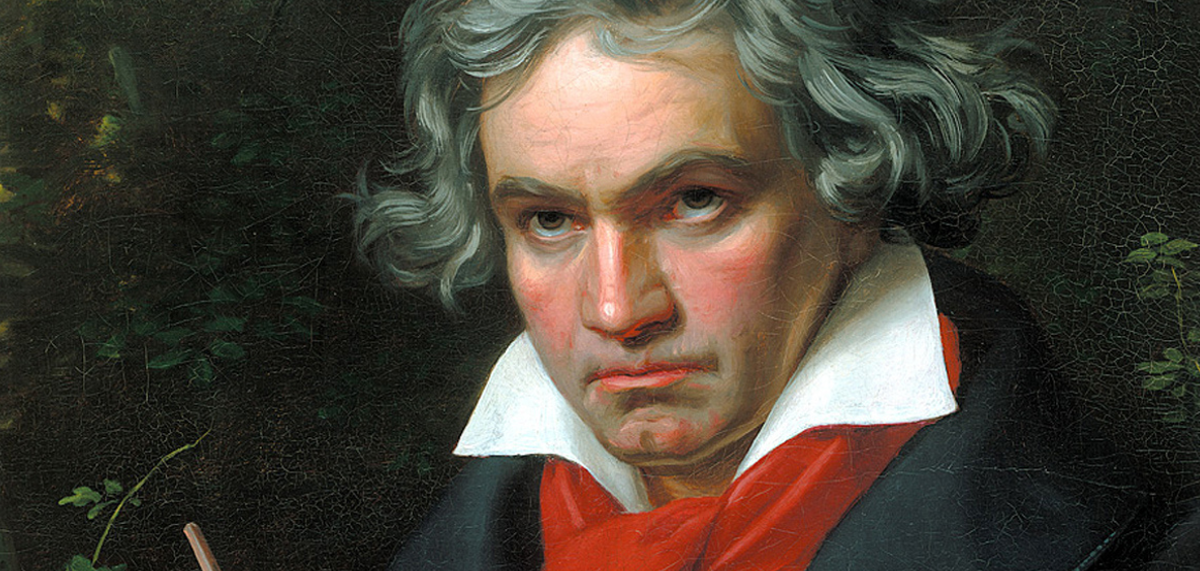Ask just about any classically trained musician if Beethoven composed any music for band, and they’ll tell you not to be ridiculous, but Beethoven did compose music for band.
This was an era before the creation of the large repertoire orchestras we know of today, and the public heard most orchestral masterpieces in transcription form by the local band. Beethoven even mimicked the sound of the band in the fourth movement of his Ninth Symphony. Roger Norrington famously called this section the “fart in the finale”, where the contrabassoon, two bassoons, and bass drum enter, in the wrong key, in a new speed, and in what you eventually realise is the wrong beat of the bar.
During twenty years, from 1792 to 1812, Beethoven composed a dozen works for various combinations of winds and brass, ranging from duos to octets.
His works for larger bands, which he called Military Music, consist of 4 marches, WoO numbers 18, 19, 20 and 24, and 3 dances: a Polonaise, WoO 21, and two Ecosaisses, numbers 22 and 23. These works were written around 1810, except the WoO 24, which we’ll talk about soon.
March No. 1 in F Major, WoO 18
The most popular of the large band works is the WoO 18, March No. 1 in F Major. It bears an inscription, “For the Bohemian Militia”, and is also known as the March of the Yorck’schen Corps, named after the Prussian General Yorck, not Yorkshire in England as many people mistake.
This march is still one of Germany’s most important military marches. It is the traditional march of the Wachbataillon, the German Bundeswehr’s elite drill unit, and is also played as the first march at Germany’s Grand Military Tattoos. The instrumentation is piccolo, 2 flutes, 1 clarinet in F, 2 clarinets in C, 2 horns in F, 2 trumpets in F, 2 bassoons, a contrabassoon, and percussion consisting of snare drum, bass drum, cymbals and triangle. All the band works from 1810 have a similar instrumentation with some minor variations.
March in D Major, WoO 24
Beethoven’s later band work, WoO 24, from June 1816, is a longer work than his previous efforts and includes a much-expanded instrumentation: 2 piccolos, 2 oboes, 6 clarinets (2 in f and 4 in C), 6 horns and 8 trumpets, in various keys, 2 bassoons and contrabassoon, and now we have a stronger bass sound with the inclusion of tenor and bass trombone and serpent, as well as the usual four percussion: snare drum, bass drum, cymbals and triangle.
Siegessinfonie
The most important of Beethoven’s works for band is the Siegessinfonie. Most people know his composition, Wellington’s Victory, but most don’t know that Wellington’s Victory started out as a work for band.
After more than a decade of plundering Europe, in 1812 Napoleon and his Grande Armee of 450 thousand men were finally checked by the Russians. His attempt to take Moscow failed and by October 1812 he was forced to retreat to Paris during the freezing Russian winter. One month later, by the time the Grande Armee left Russia, only 27000 men survived.
Six months later, in June 1813, with Napoleon trying to reconstruct his army, the Duke of Wellington had a victory over Napoleon’s forces at the Battle of Vitoria in Spain.
To celebrate this victory, and to make some quick money, Beethoven’s friend Johann Mälzel, the inventor of the metronome, talked him into writing a composition to commemorate the battle, and which he would engrave on his “mechanical orchestra”: the panharmonicon. The Panharmonicon could imitate all instruments and sound effects like gunfire and cannon shots.

Beethoven, however, wrote a composition for large band: an instrumentation so large that Mälzel could not build a machine large enough to perform the music. As an alternative plan, Beethoven rewrote the Siegessinfonie for orchestra, he added a first part and renamed the work, Wellington’s Victory. It was in this form that it was premiered in Vienna, along with the premiere of his Symphony No. 7 and a work performed by Mälzel’s mechanical trumpeter.
The original band composition of the Siegessinfonie survives in the Berlin State Library. It’s a presentation copy by Beethoven’s copyist, but it has Beethoven’s corrections and a title page in his handwriting.
You can find modern playable editions of some of Beethoven’s early band works, especially the March No. 1, the Yorkshen march, and the longer work from 1816, the March in D, at the large sheet music retailers. The Siegessinfonie, in a modern edition by David Whitwell, is available from Maxime’s Music.




